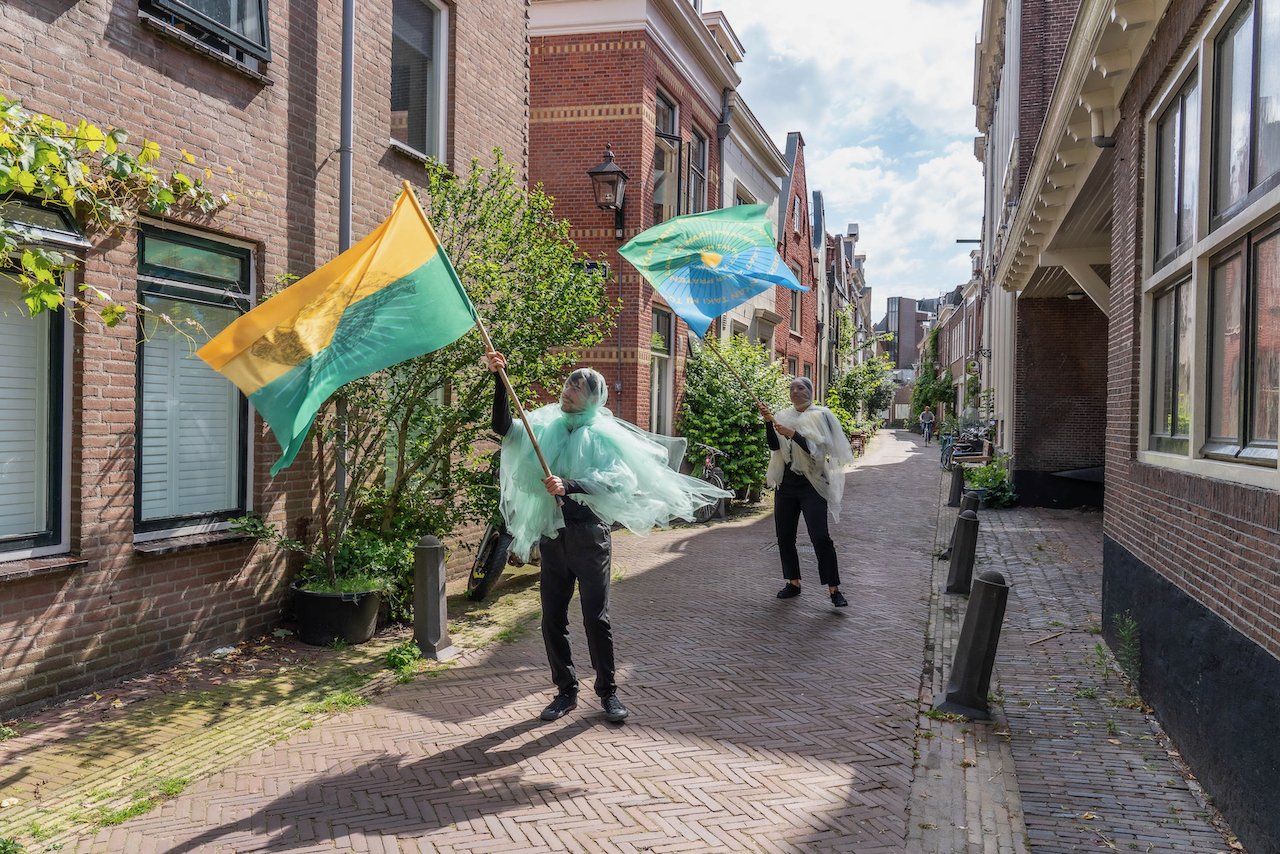
RETURNING THE GAZE
performances created with Sites of Memory in Haarlem, Amsterdam and Middelburg
1 hour each
2022
Returning the Gaze is a series of three site specific performances created by Sites of Memory that share local unrepresented stories about the colonial past of Haarlem, Amsterdam and Middelburg respectively through music and dance, poetry and images. Whose voice is heard, ignored or acknowledged? Whose face is seen, erased and covered up? The dominant, often white gaze versus the suppressed perspective from which colonial history is viewed, is central to these performances.
Sites of Memory is founded by Jennifer Tosch (cultural historian and founder of the Black Heritage Tours) and Katy Streek (theatre maker and programmer). Every year Sites of Memory develops a site-specific performance in cities in The Netherlands based on a specific theme and works together with various artists who interpret the cities and their history in a unique way. Shishani, Jörgen Gario, Jomecia Oosterwolde, Xaviëra Nibte, Mihai Pruna, and myself, as well as Katy Streek and Jennifer Tosch formed the core team that created Returning the Gaze. In each city additional collaborations took place with local musicians, choirs and poets.
In the collective working process I contributed to writing the scripts, performed a role in each performance and created the set designs and installations (such as designing flags, banners and portraits and making a projection, a shadow play and a wall drawing), as well as the images used for pr. Below an overview of my contributions to the three performances.
middelburg
Returning the Gaze took place in Middelburg on 17, 19, 20 November. The performance took the audience back to November 1596. That year, about 130 African men, women and children arrived in Middelburg by ship. They were prisoners aboard the ship of merchant Pieter van der Hagen and captain Melchior van den Kerckhoven. A viewing day was organized on the Abdijplein on November 18, during which they were exhibited to people in the city. As baptized Christians they could live in freedom, however two weeks later the children, women and men were again enslaved by the government of the Republic. After a short stay in Middelburg, they were reembarked and sold in the West Indies. What was the impact of this history on the residents of Middelburg in the past and in the present?







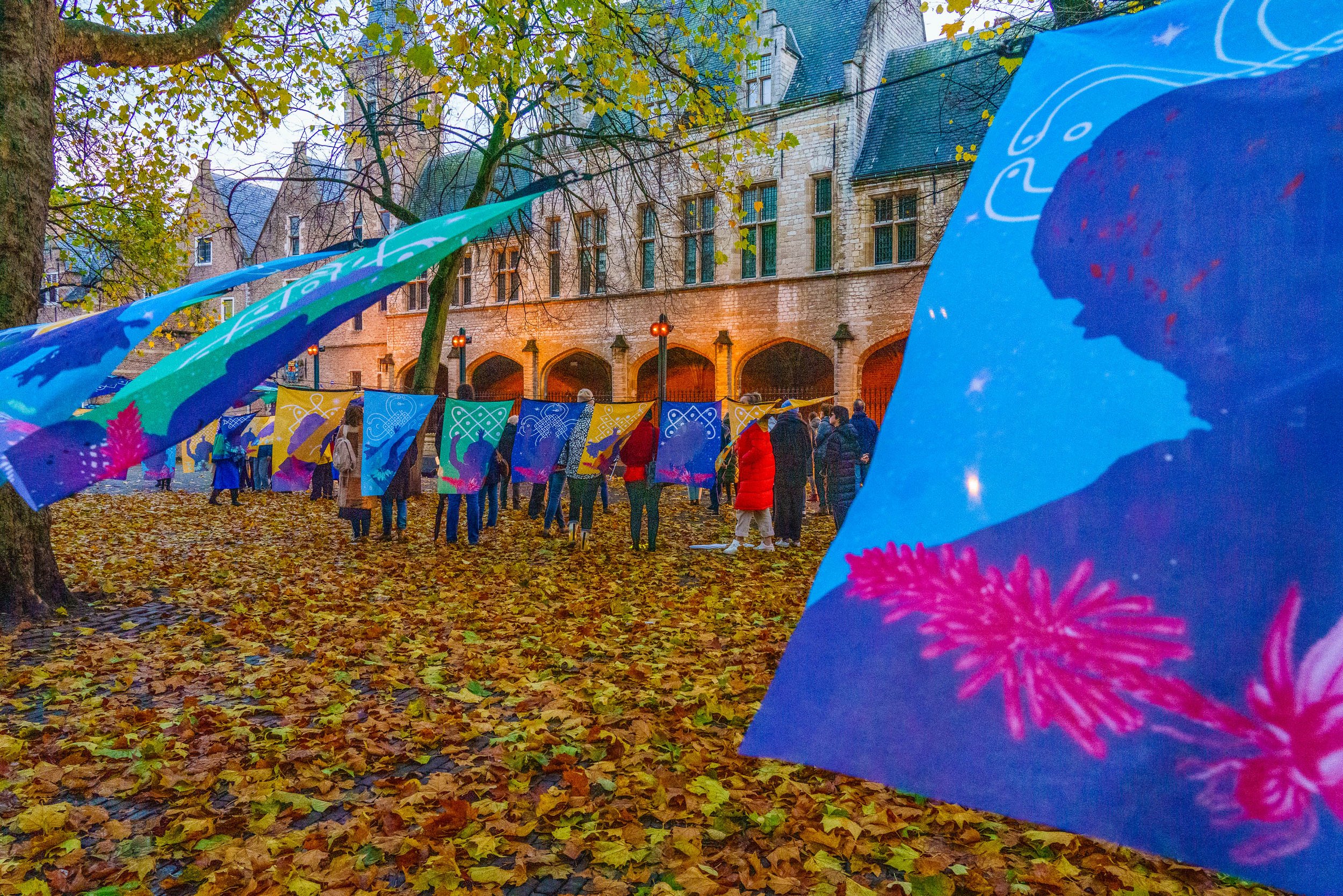
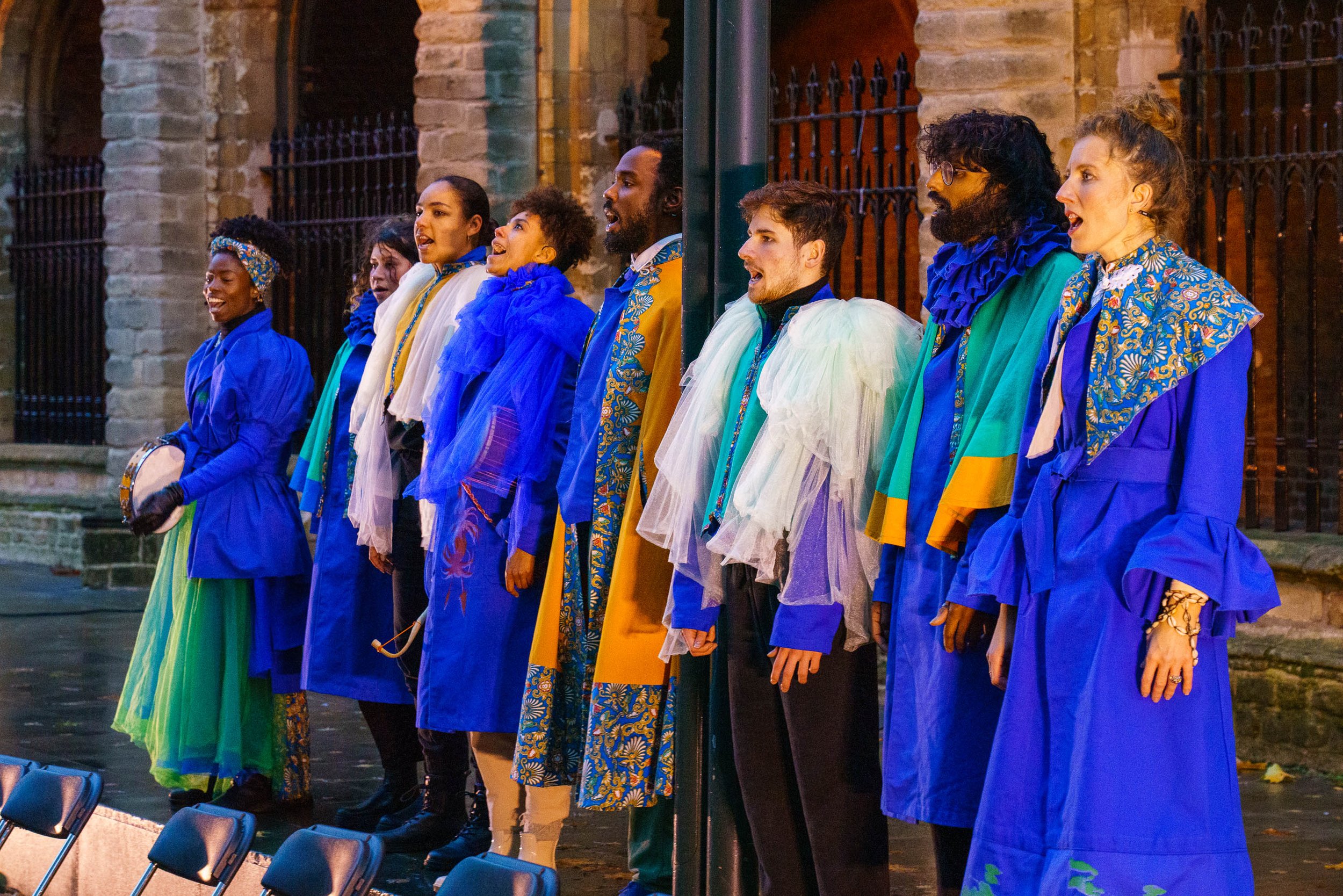
All photos of the performance Returning the Gaze in Middelburg taken by Rien de Jager
An installation of 130 portraits to commemorate the 130 men, women and children from Angola that stood on the Abdijplein on 18 November 1596. As there are no names, nor images of them, I used four silhouettes of an Angolan woman, man, boy and girl to represent them. Behind each face is a sona (singular lusona), which are sand drawings used as a mnemonic device by the Chokwe people of Angola to help remember proverbs, fables, games, riddles and animals, and to transmit knowledge. I used five different lusona ideographs, namely creation, marriage, friendship, tortoise and antilope. They are set agains a starry sky in dark blue, light blue, geen and yellow like star signs. Healing plants in red or green frame the bottom of each silhouette. Through the variations in the silhouettes, colours, sona and plants, each portrait is unique, representing a unique individual person.

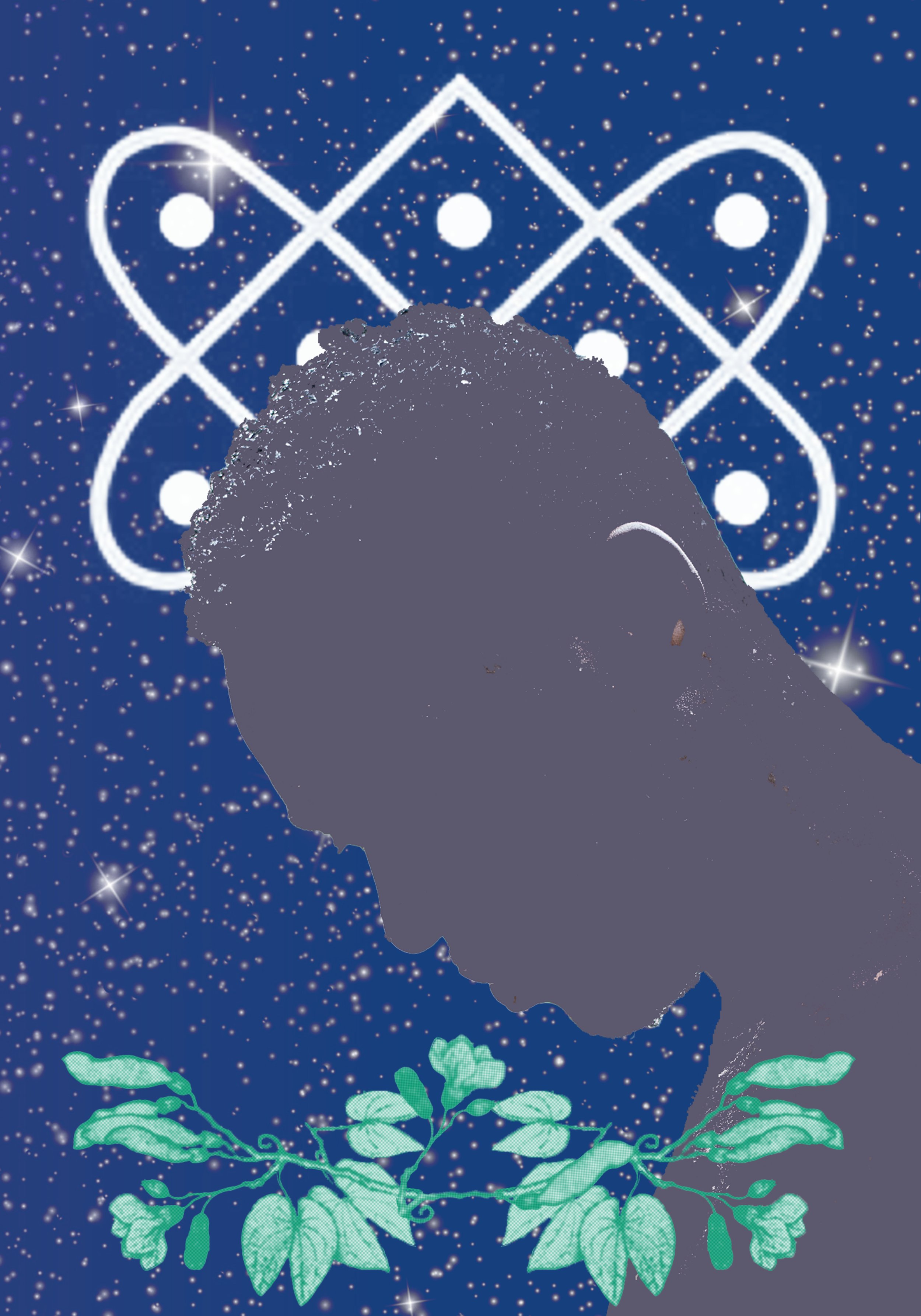





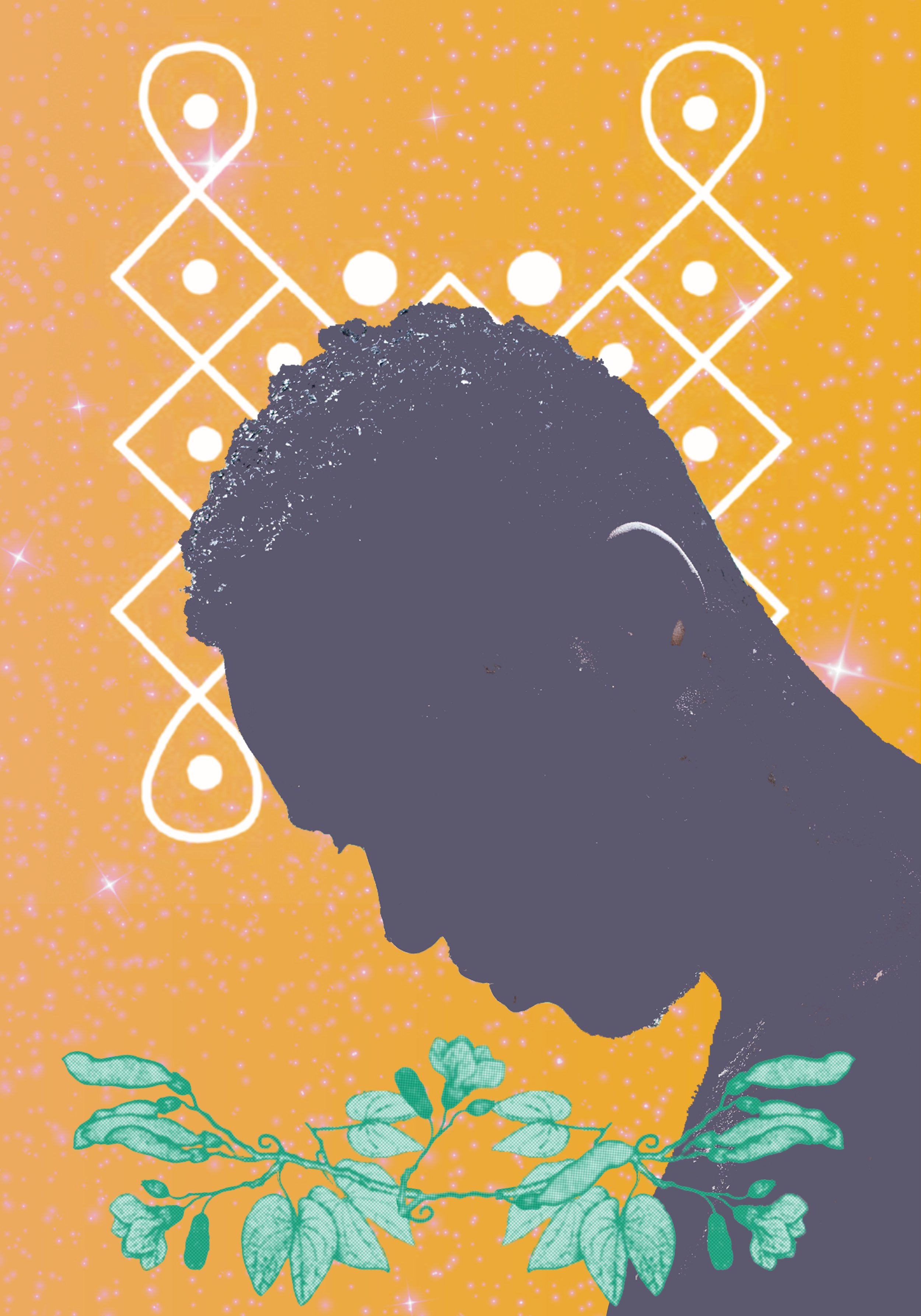
amsterdam
Returning the Gaze took place in Amsterdam on 23, 24, 25 & 30 September and 1 & 2 October. The audience was taken on a walking tour from Willet-Holthuysen Museum to the Amsterdam Museum along the Amstel. These museums, their collections, the history of the buildings and the city itself form the starting point for this performance. The artists reflect on themes such as wealth and power from different perspectives. What happened to capital obtained through colonial trade, how many generations of families benefited and at the expense of what and who?
trailer
The trailer is filmed at the Willet Holthuysen Museum, where part of the performance took place, and features Shishani, Jomecia Oosterwolde, Jörgen Gario, Xaviëra Nibte, Mihai Pruna and Judith Westerveld. Filmed and edited by Bowie Verschuren.
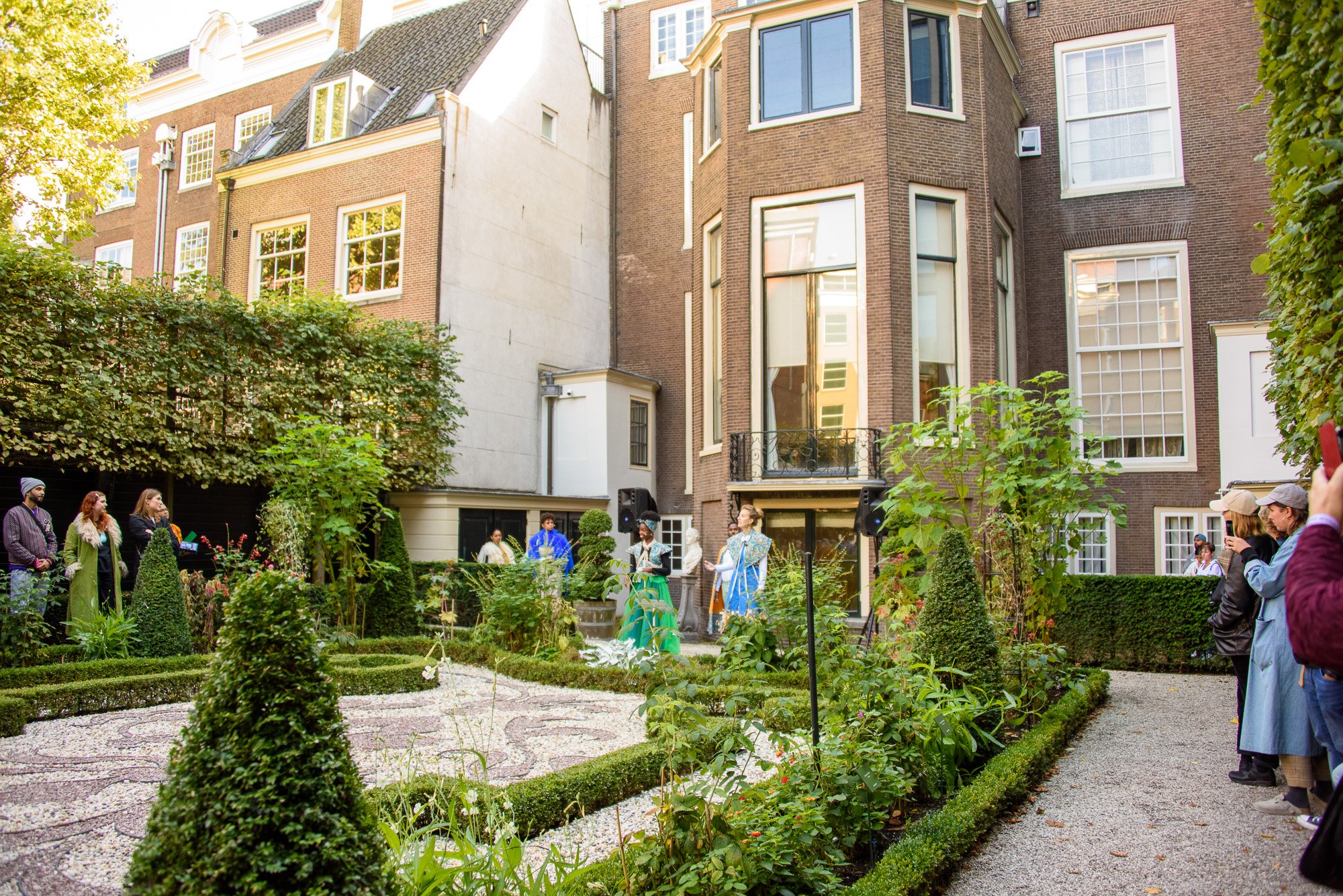
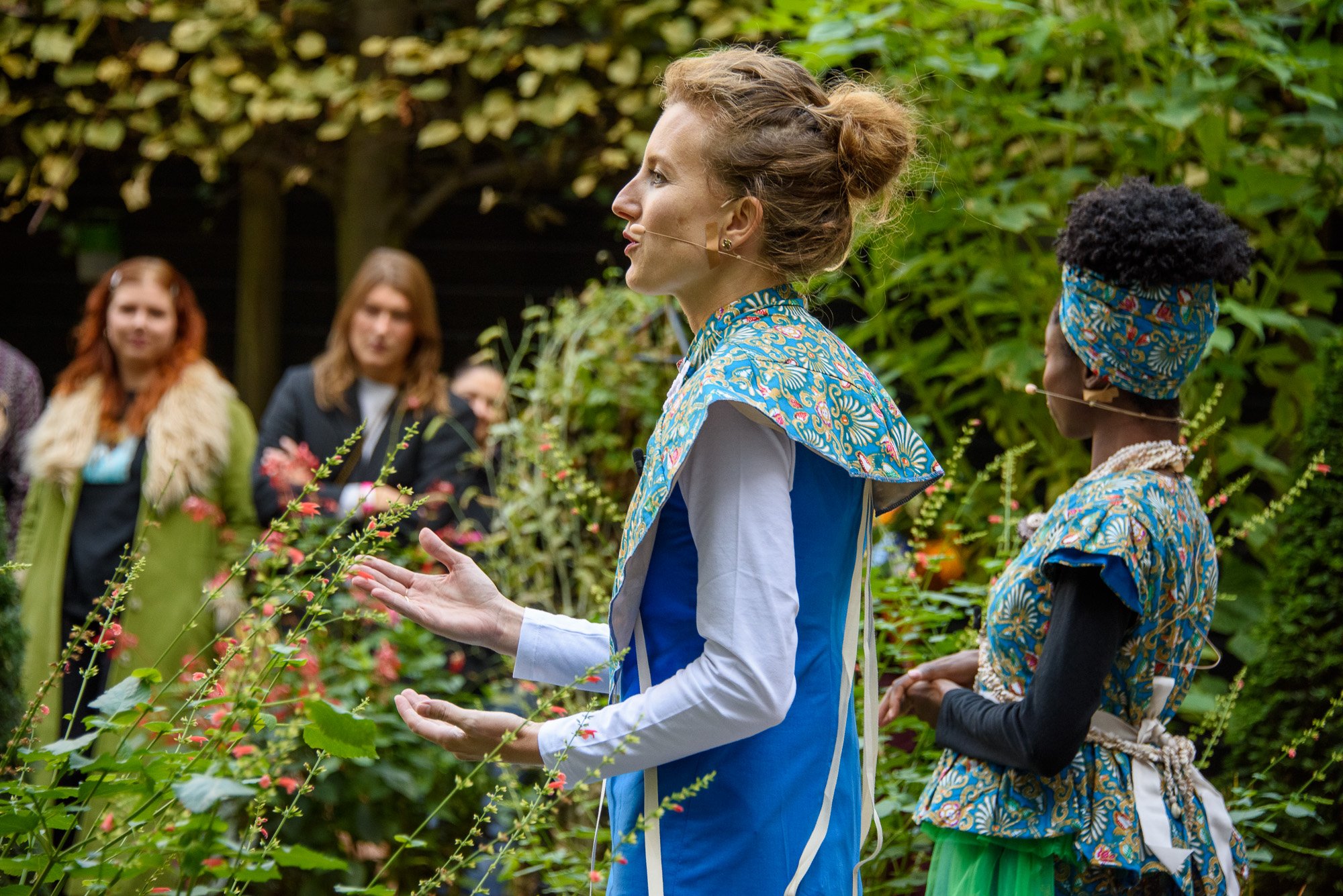

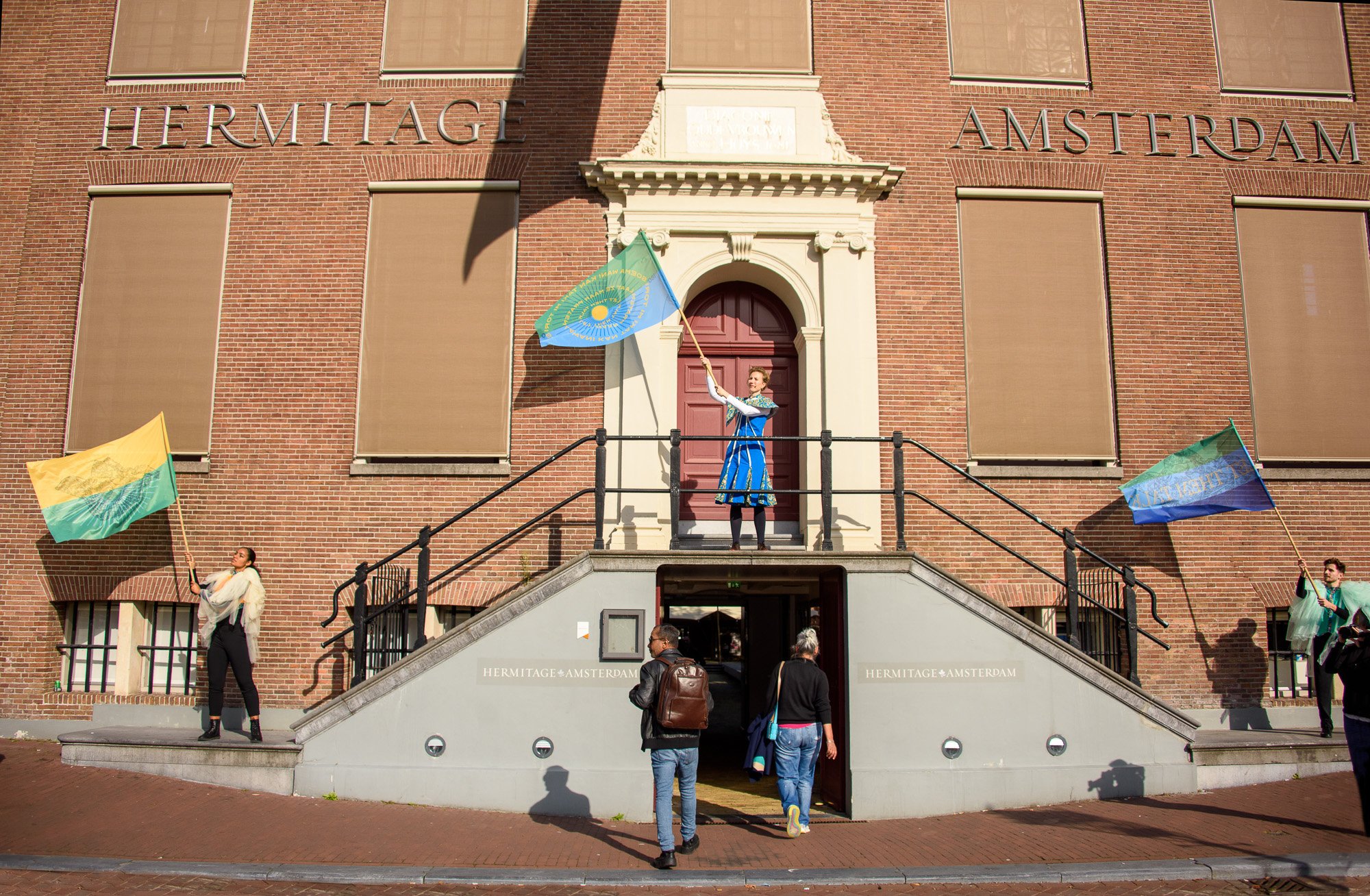



All photos of Returning the Gaze in Amsterdam taken by Monique Vermeulen, Amsterdam Museum
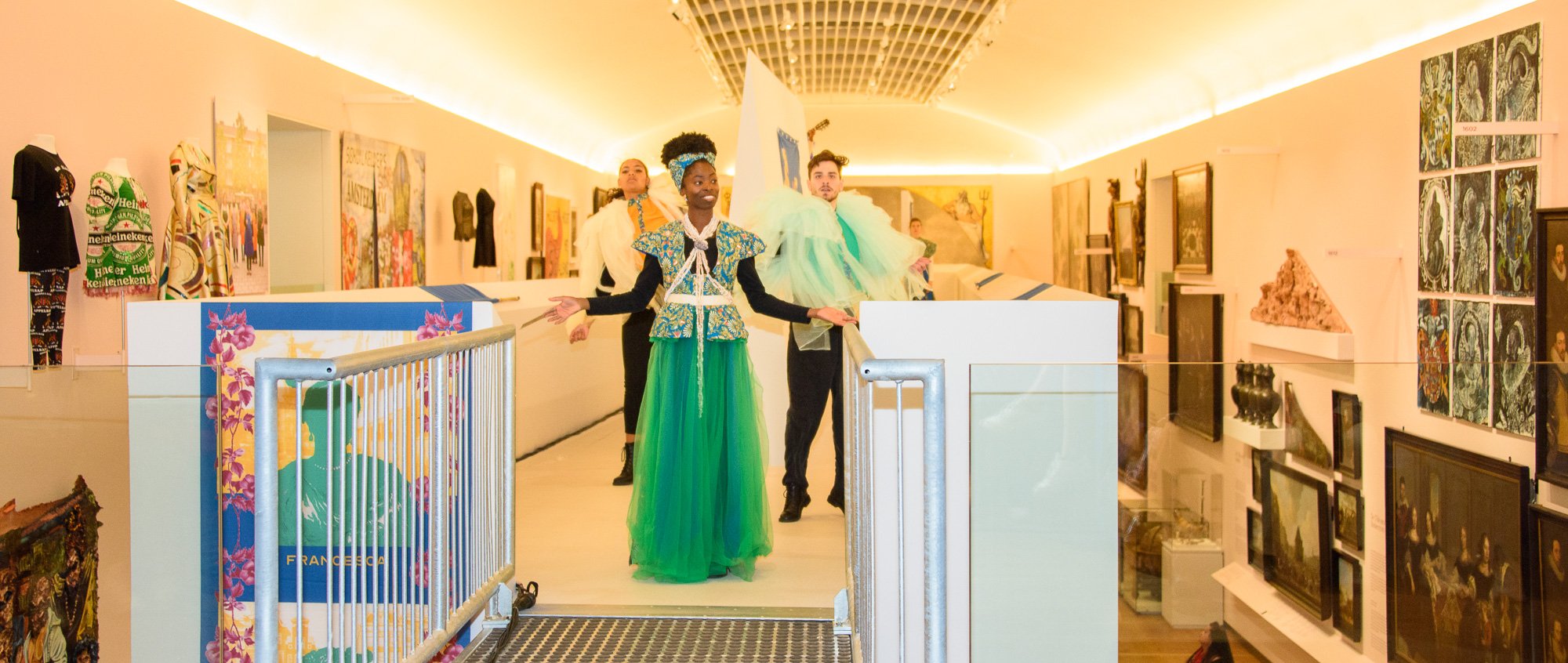
In closing of the performance, a series of thirteen portraits on fabric are revealed, created by visual artist Judith Westerveld, in accordance with the Sites of Memory team. They depict women of colour that lived in Amsterdam, or the former colonies of the Netherlands in the 17th, 18th and 19th century, that we felt needed to be given a rightful place in the exhibition Panorama Amsterdam of the Amsterdam Museum.
On the four long banners the portraits that are presented are silhouettes linked to the names of twelve women of colour whose stories recorded in archives spoke to us: Charlotte Magdalena Reda, Elisabeth Maria Antonia Aspasia, Wilhelmina Kelderman, Cathalina del Monte, Clara, Francesca, Mimi Elizabeth Kambel, Lea van Bali, Serafina van Brazilië, Sara Malagesa, Chistina van Geugten and Juliana. Judith Westerveld created the silhouettes based on portraits made of women of colour by various artists, such as Rembrandt, Frans van Mieris, Cornelis van Dalen (II) and Cornelis de Bruin, who drew or painted them without recording their name. The silhouettes are placed against contemporary photographs of the places in Amsterdam where these women lived, worked, and died, such as the area in and around the Jodenbreestraat that was home to a small Afro-Atlantic community, the Jordaan, the grand canal houses of the Goudenbocht, and the Diaconie Oude Vrouwenhuis. Or the places where they were married, baptized and buried, such as the Möses and Aaron Kerk and the Zuiderkerk. Illustrations of hibiscus, ginger and podosiri (açaipalm), plants whose roots and leaves, flowers and fruits have healing properties, frame the portraits of the women.
The portraits of Susanna Dumion, Serafina van Brazilië, Mimi Elizabeth Kambel and Charlotte Magdalena Reda are highlighted. On these large rectangular fabrics, the women’s faces and names are framed by the healing plants. Hibiscus envelopes Susanna Dumion and Charlotte Magdalena Reda. Ginger envelopes Serafina van Brazilië. Podosiri (açaipalm) envelopes Mimi Elizabeth Kambel.




haarlem
Returning the Gaze took place in Haarlem on 2 & 3 July 2022. The performance told the story of Susanna Dumion, who was born into slavery in Suriname in 1713 and died in Haarlem in 1818 at the age of 105. What was it like for her to live in Haarlem as a Black woman at that time? How is she remembered and how do we want to remember her?
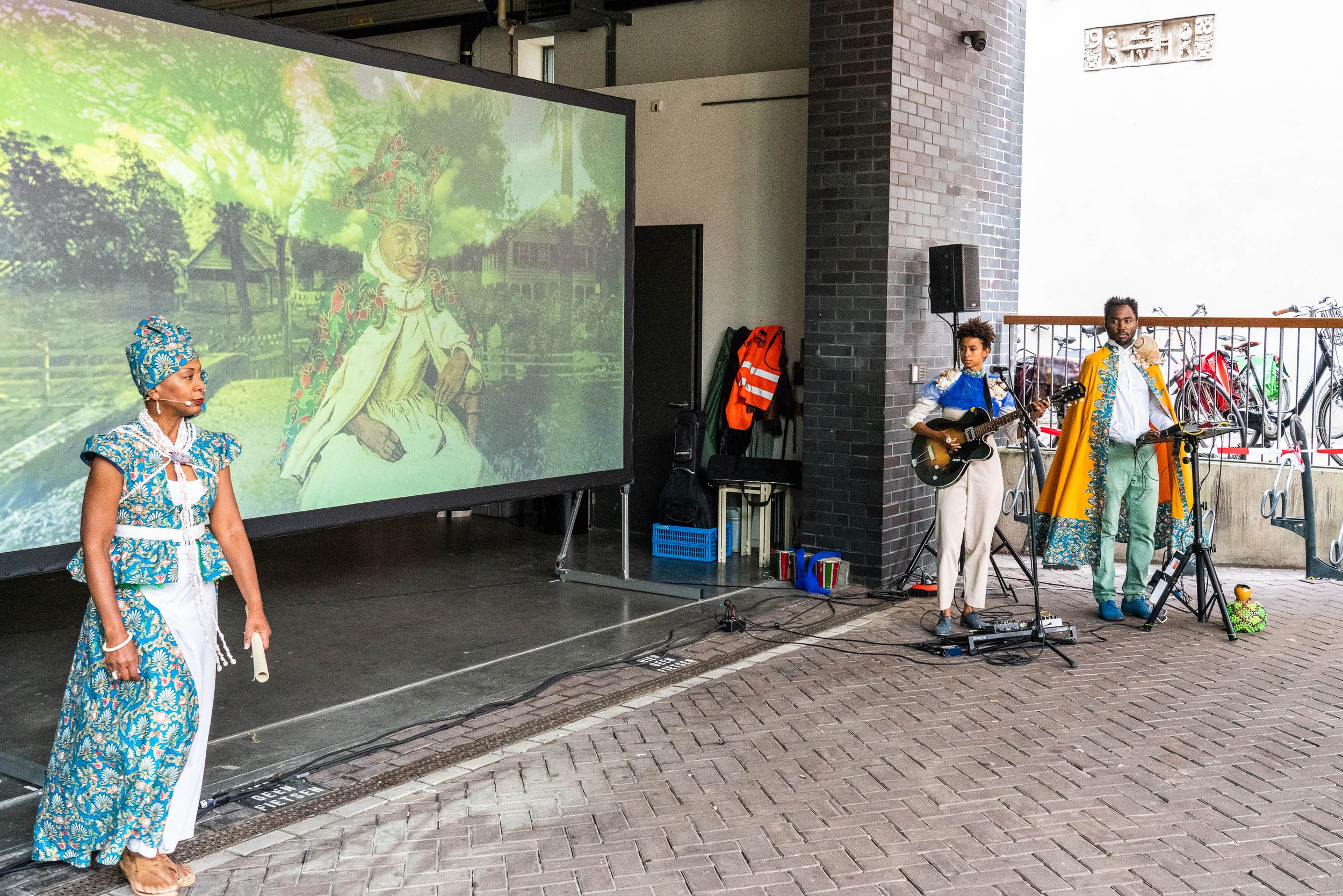
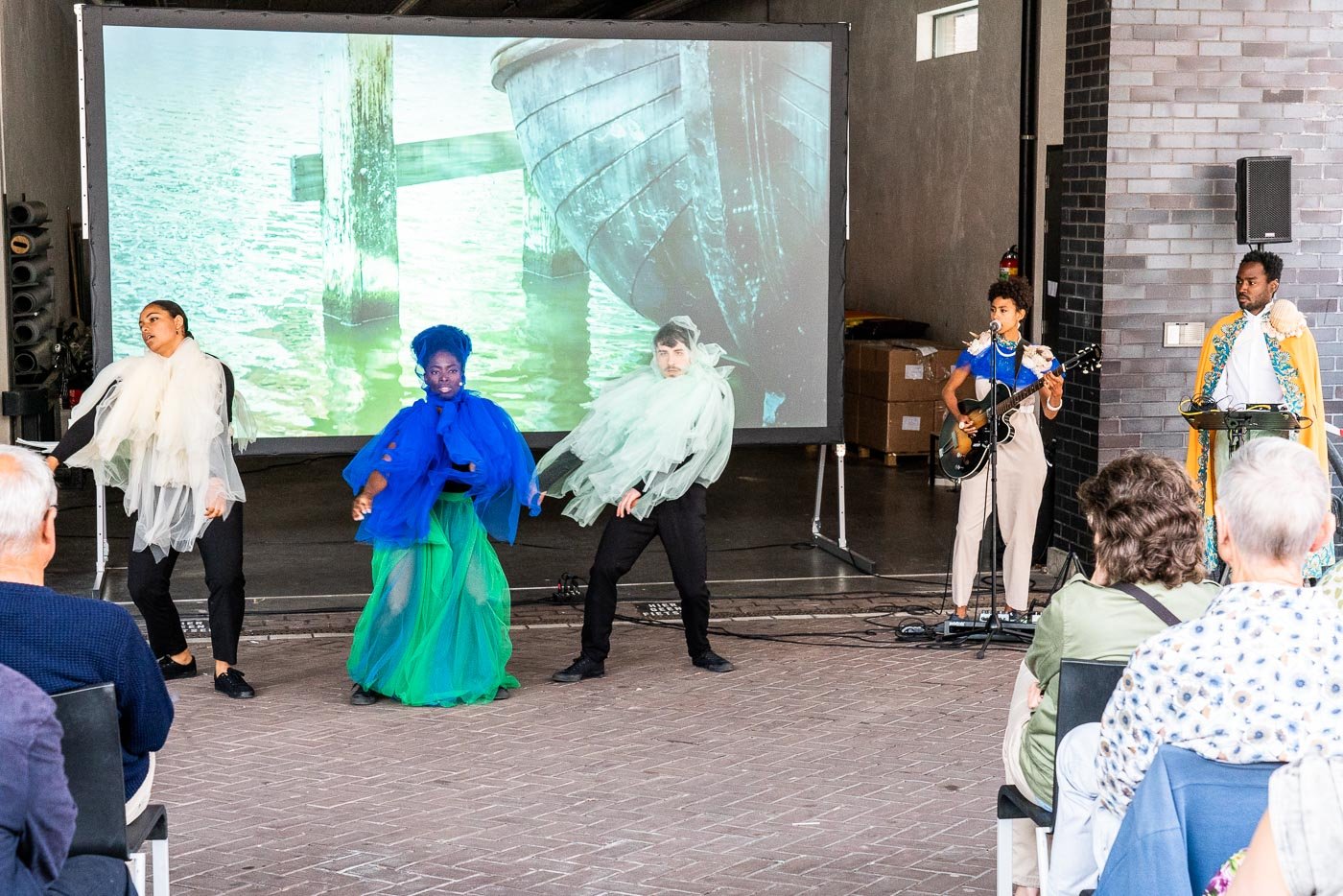
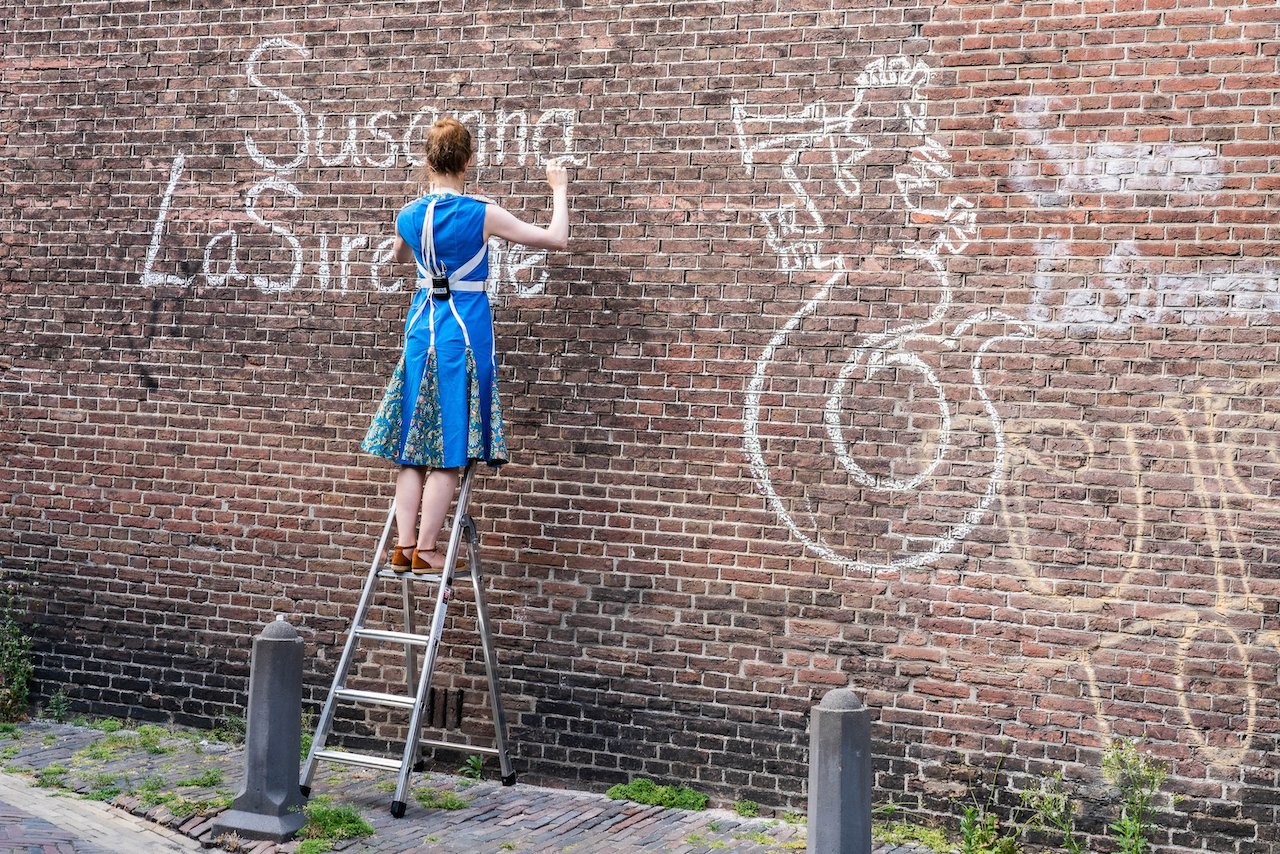

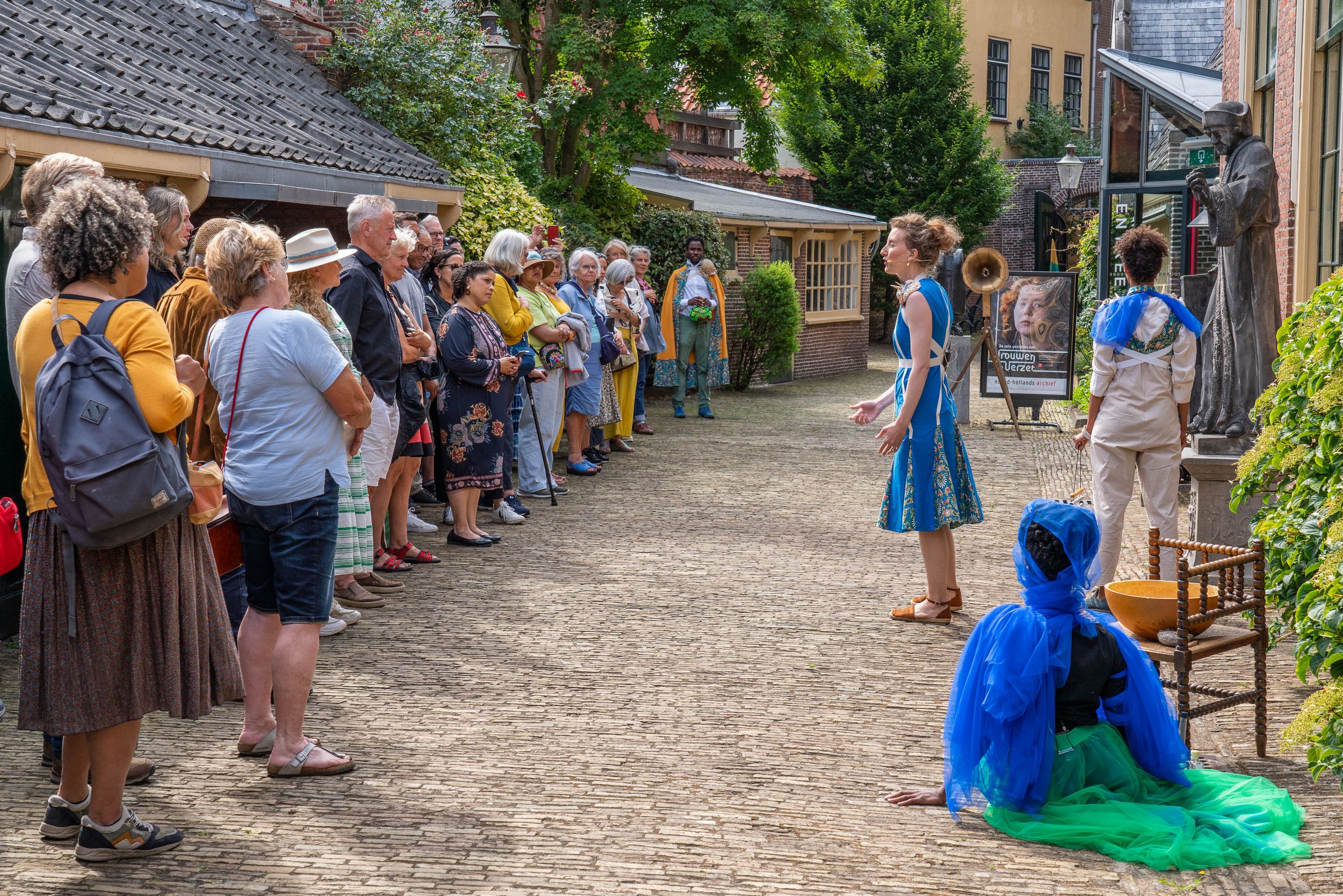
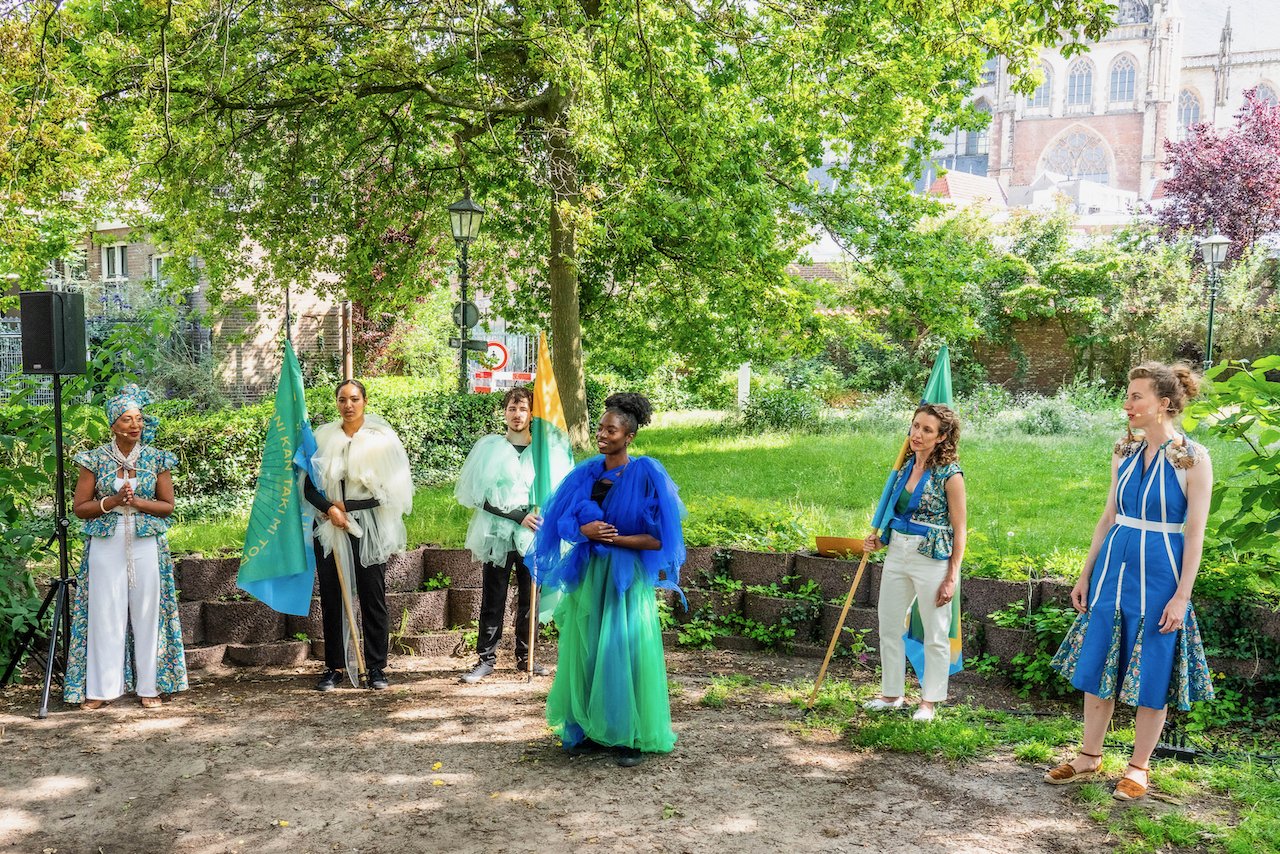
All photographs of the performance Returning the Gaze in Haarlem taken by Rien de Jager
The flags I designed use various symbols that return throughout the performance on flags and banners, in the projection and in the wall drawing. The main symbol is the angisa (headscarf) that Susanna Dumion wears in the altered portrait I created that returns her Surinamese identity to the portrait. The angisa is folded in a pattern that displays the coded message ‘Let them talk’ (Soema wani kan taki mi tori’ in Sranan Tongo, or ‘Laat ze maar praten’ in Dutch). Other symbols such as the eye, vision charts and the optic sans type font reference the title and central theme ‘Returning the Gaze’, and the mythical figure La Sirene forms Susanna Dumion powerful alter ego.

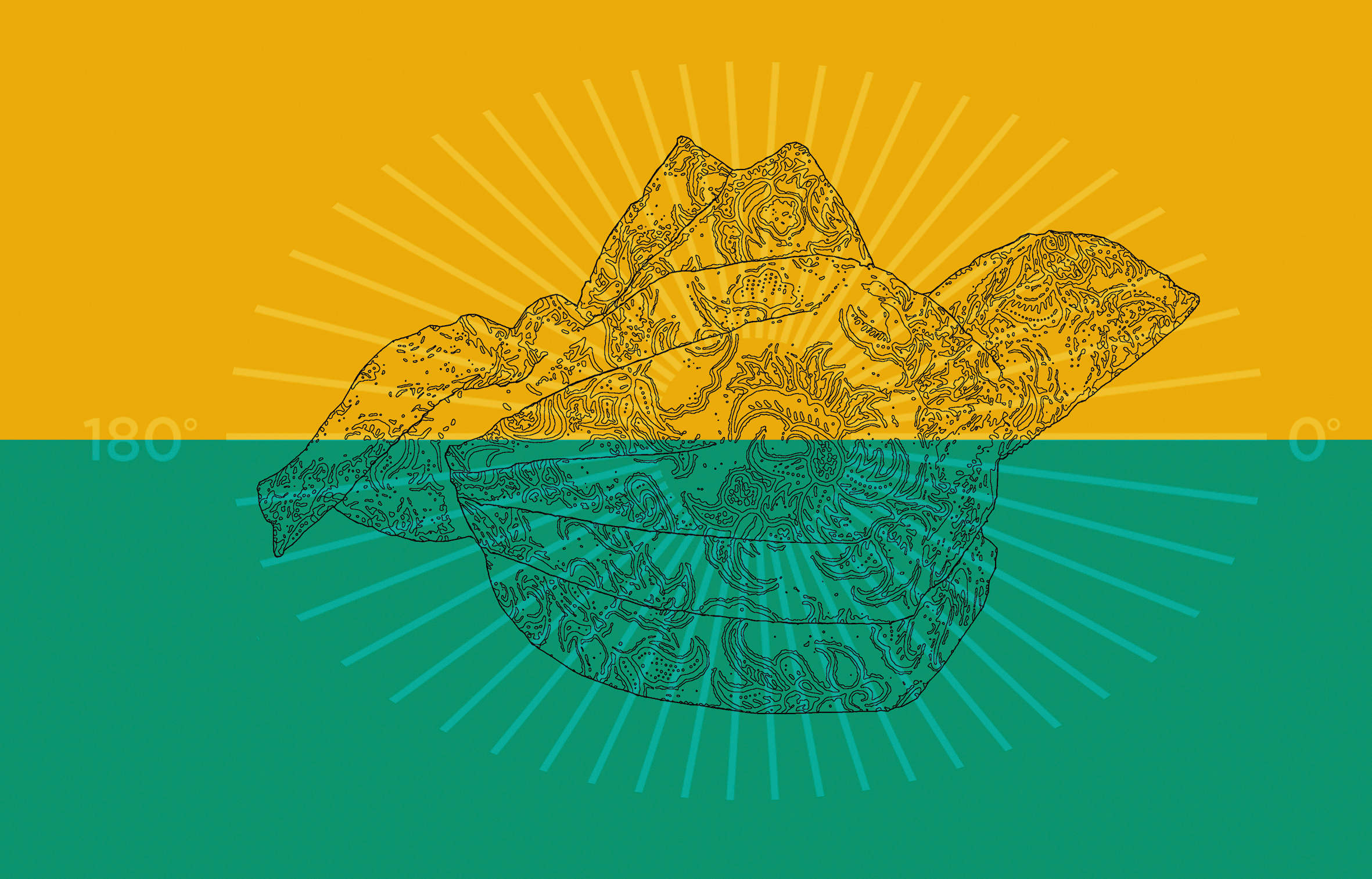



CREDITS
Concept & artistic directors: Jennifer Tosch, Katy Streek
Makers & performers: Jomecia Oosterwolde, Jörgen Gario, Shishani, Judith Westerveld
Script & text: Jörgen Gario, Shishani, Judith Westerveld, Jomecia Oosterwolde, Katy Streek, Jennifer Tosch
Director: Katy Streek
Choreography: Jomecia Oosterwolde
Composition & music: Jörgen Gario, Shishani
Set design & installation: Judith Westerveld
Costume design: Alejita
Dance: Mihai Pruna, Xaviëra Nibte (DOX)
Spoken word: Nathan Sanjaya, Nour Jordan (Nowhere)
Composition, cello and gitar: Hayat Ketiga - Dries Alexander, Irene van Driel
Research: Mapping Slavery Project, Amsterdam Museum
Creative producer: Gina Alina Patilea
Business manager: Kimberley Smit
Technical coördinator: Boaz van den Ban










